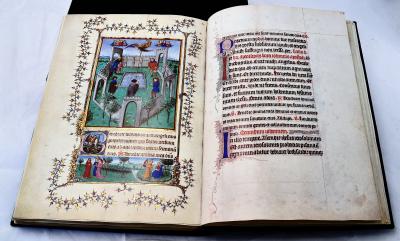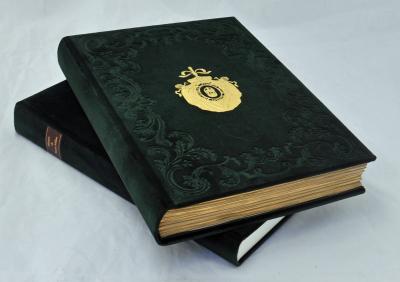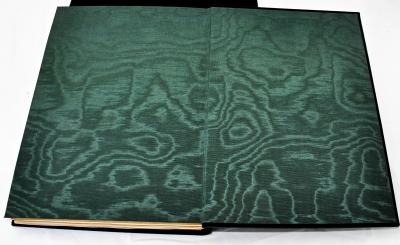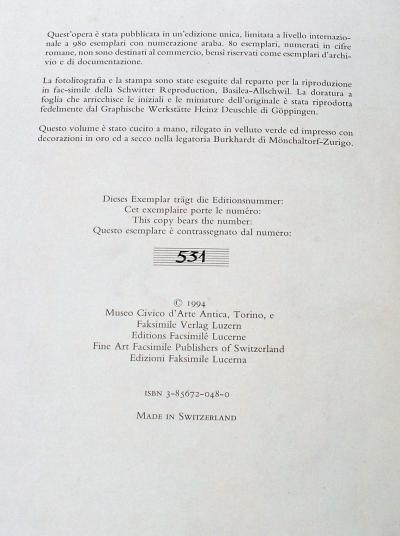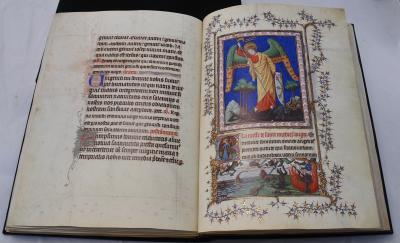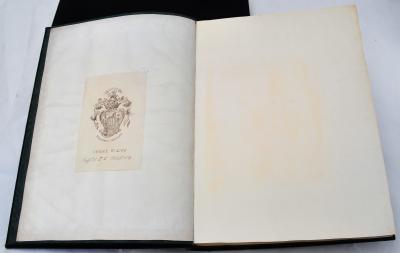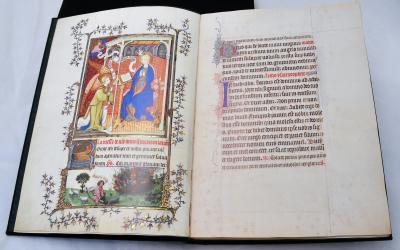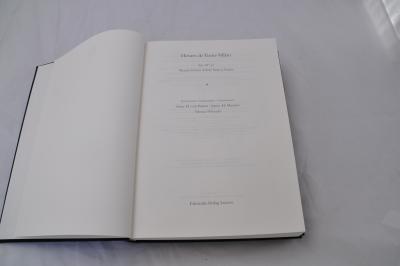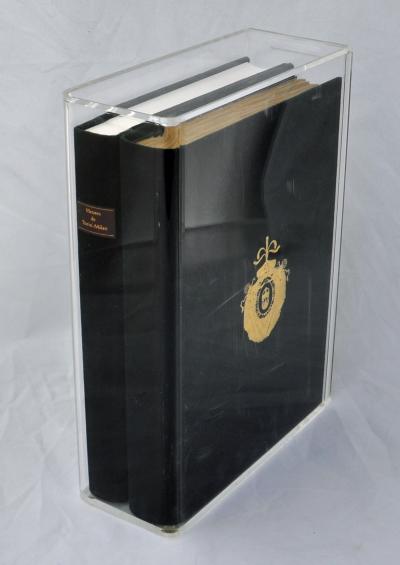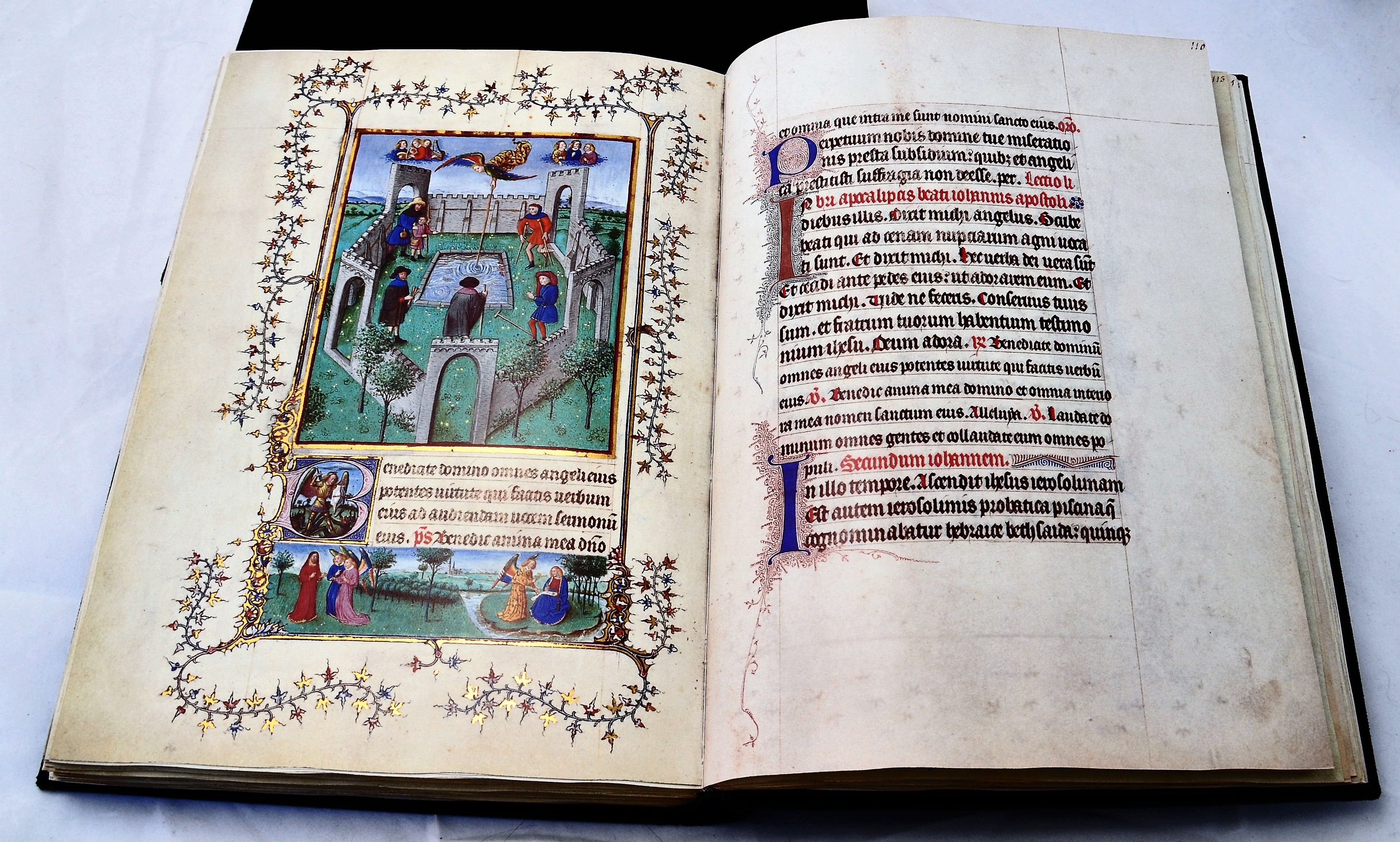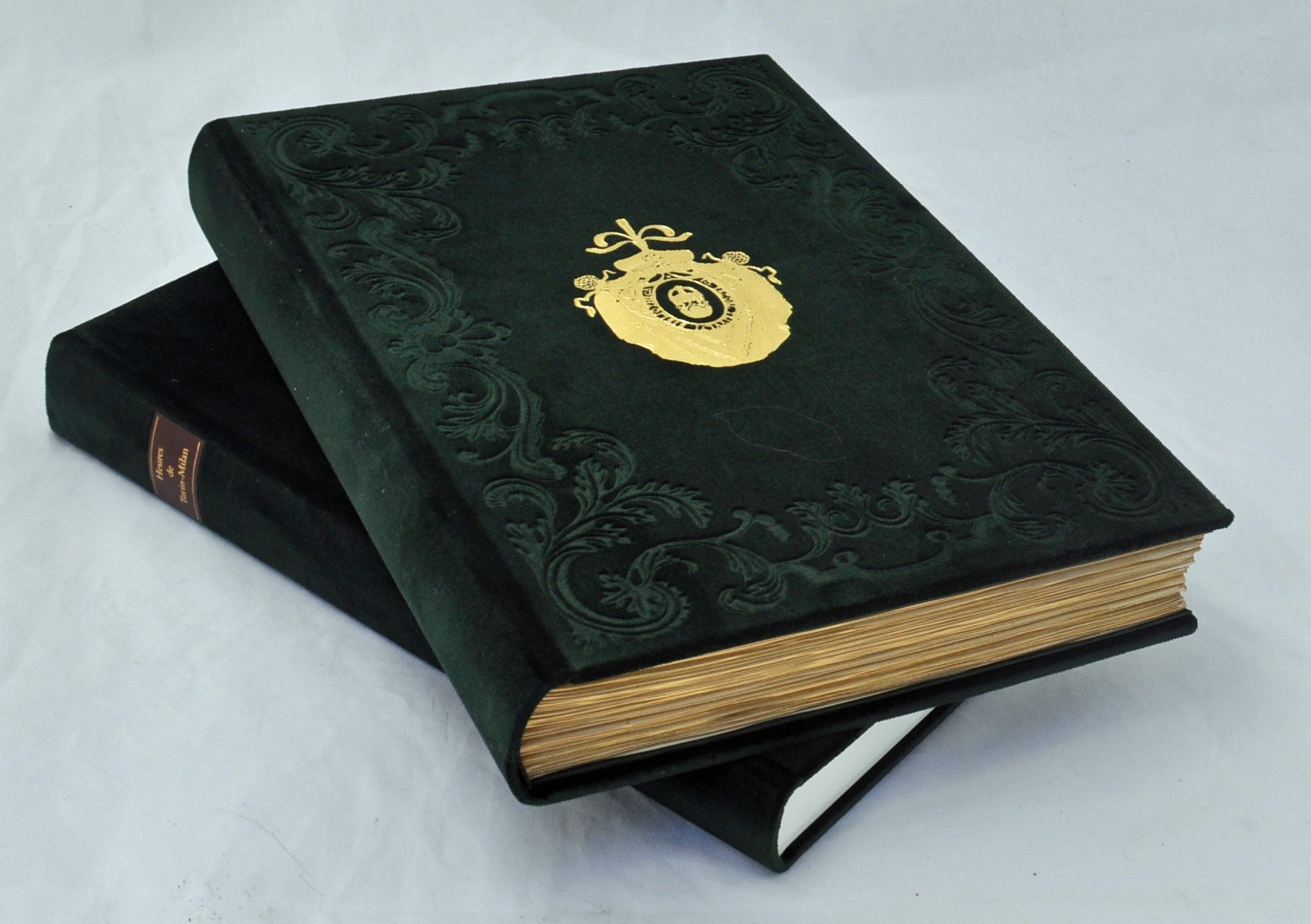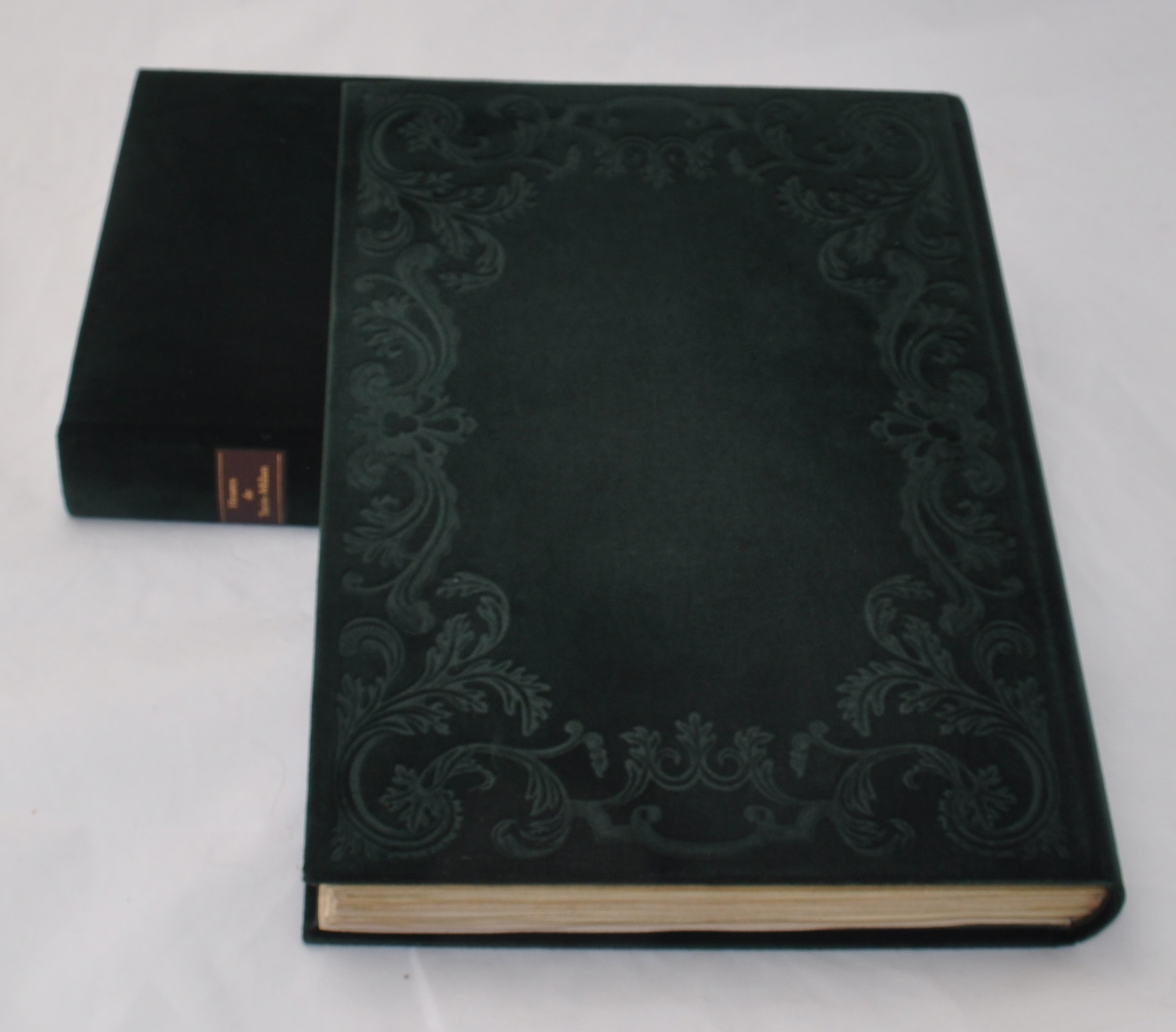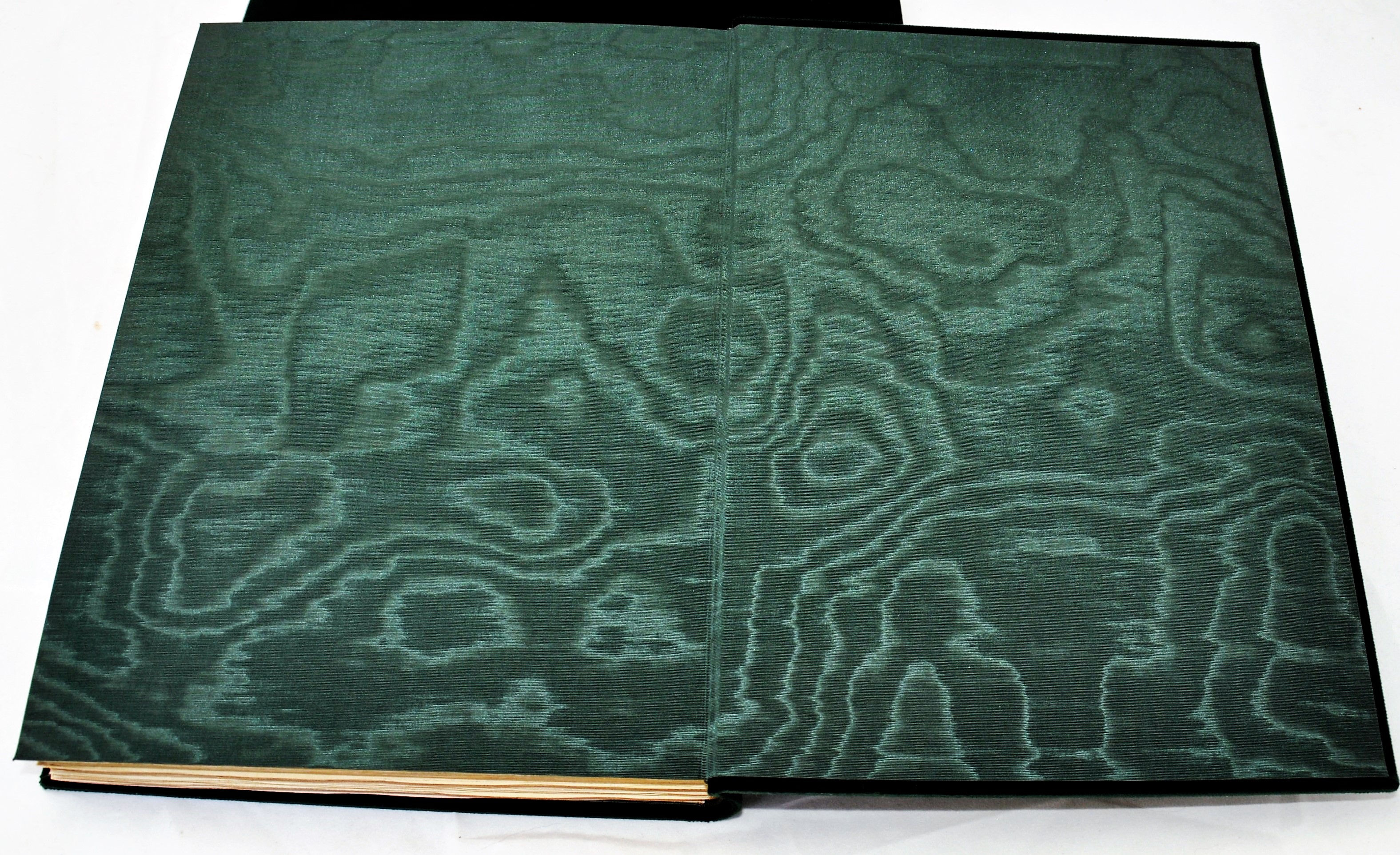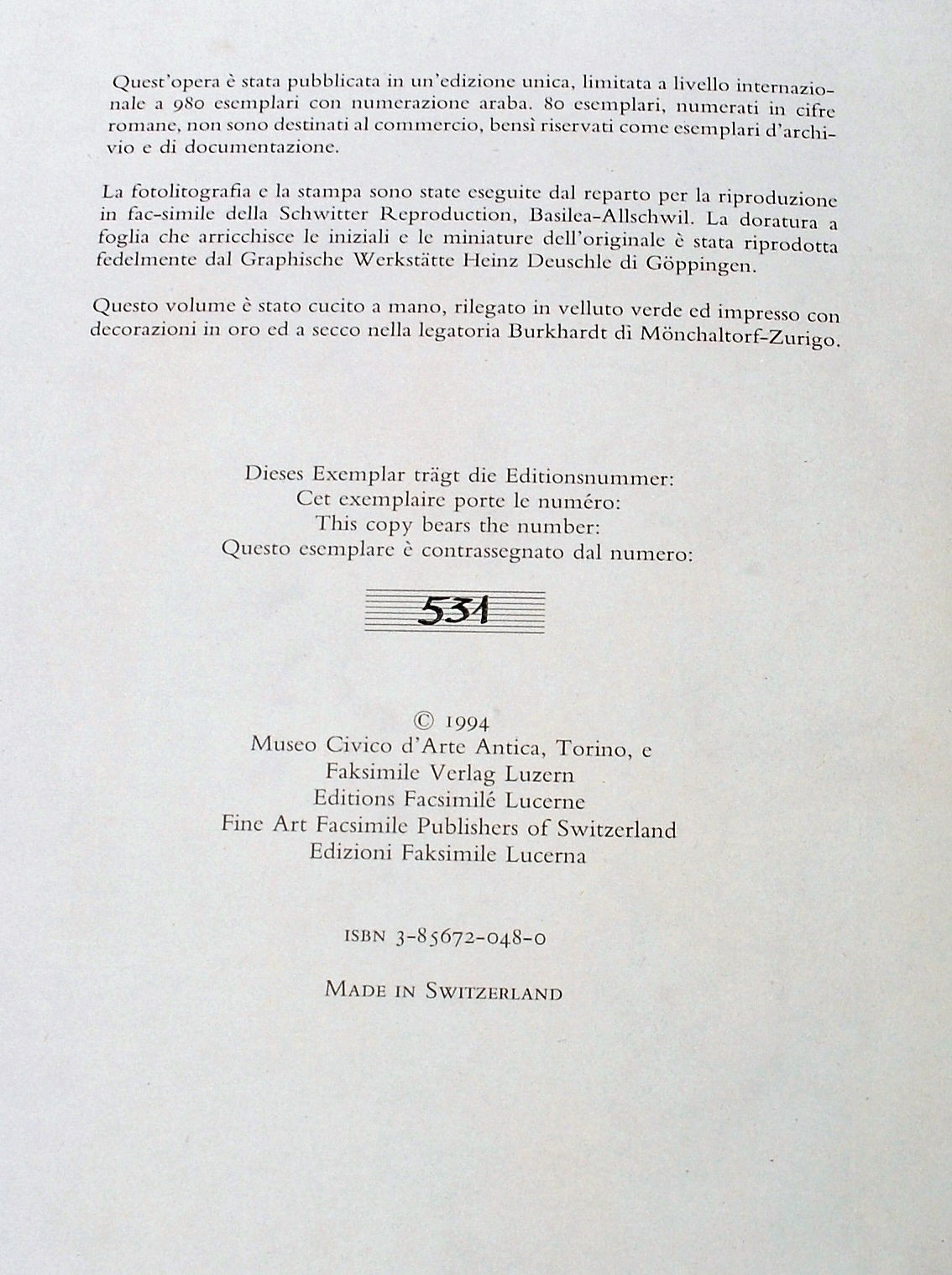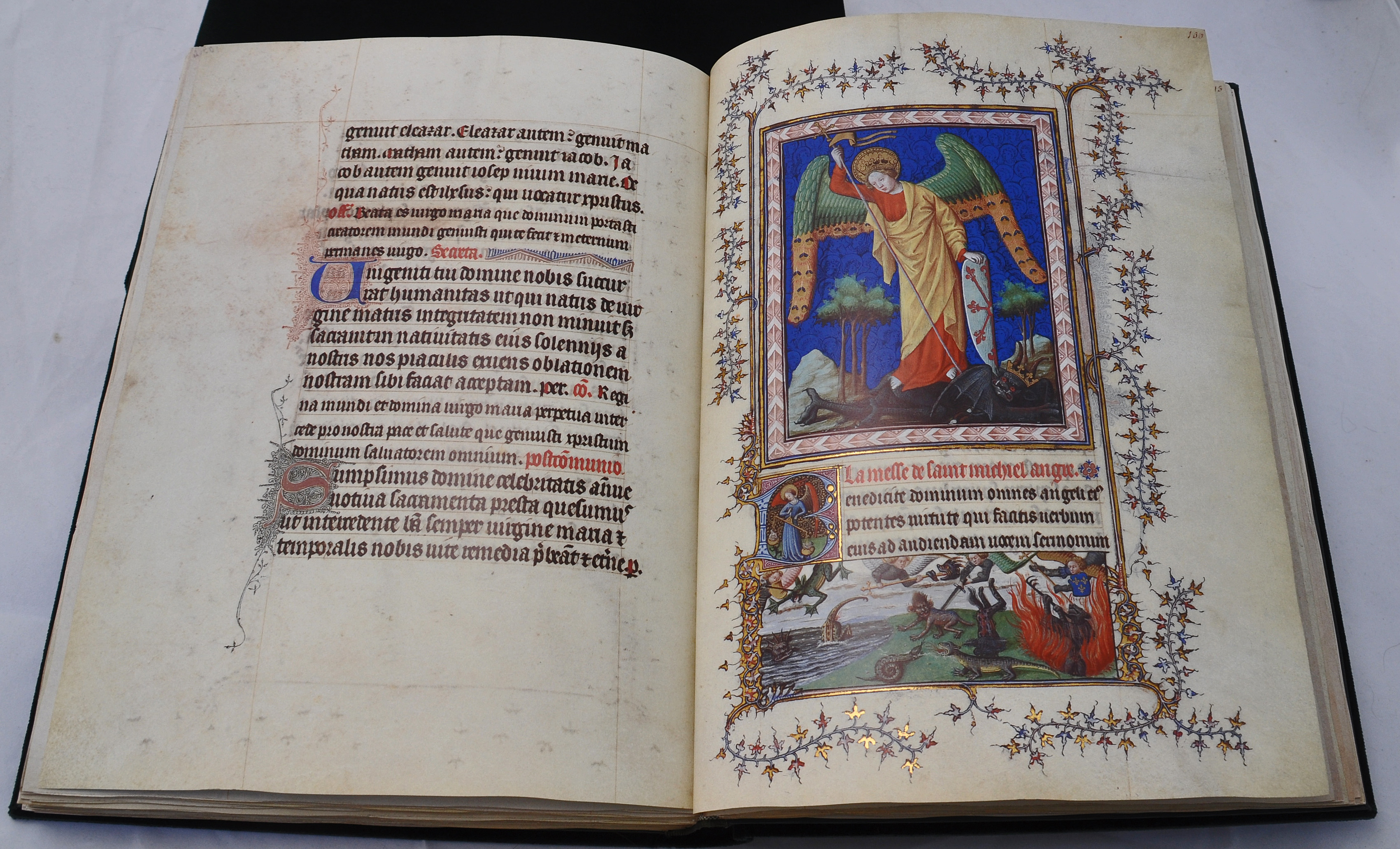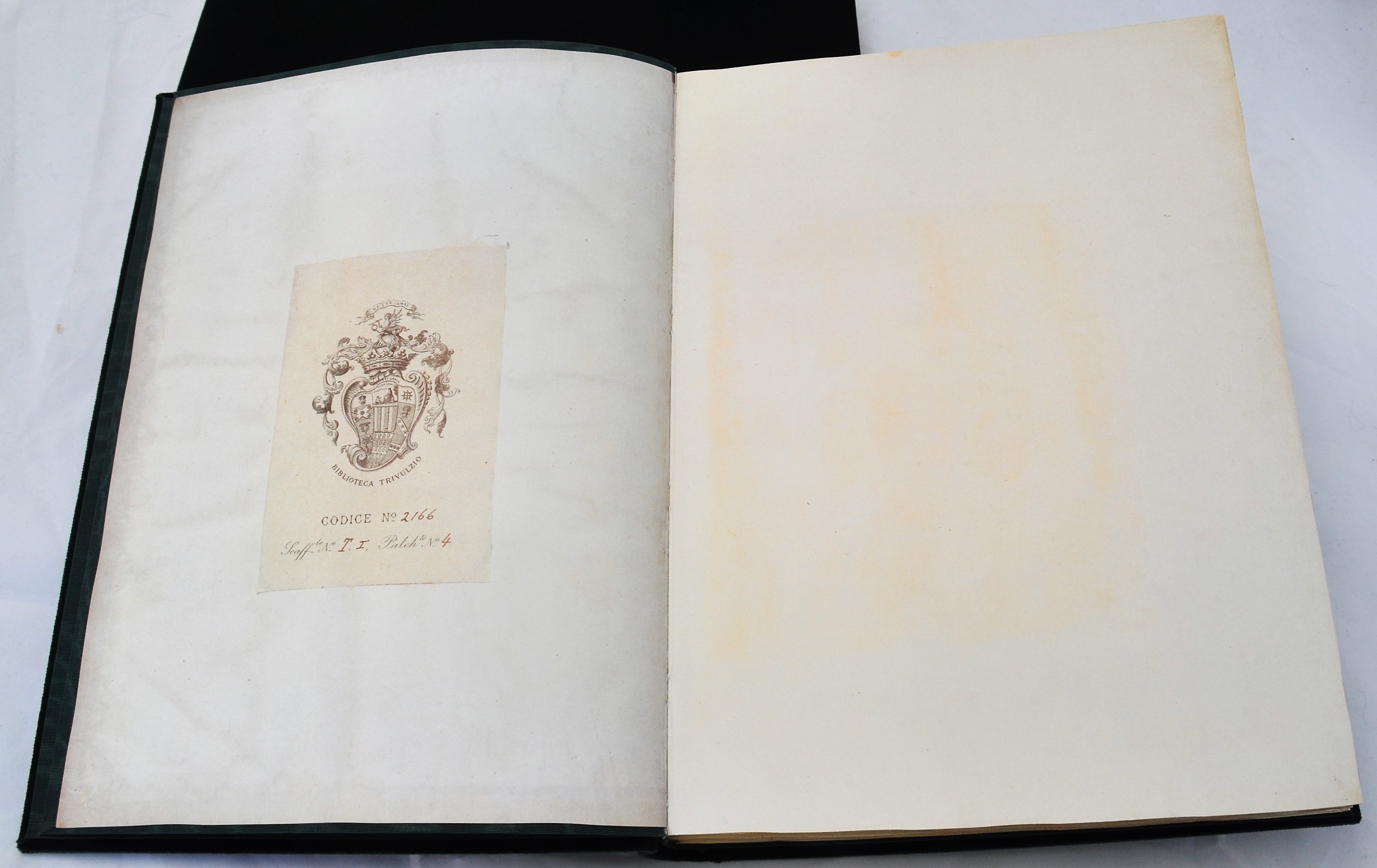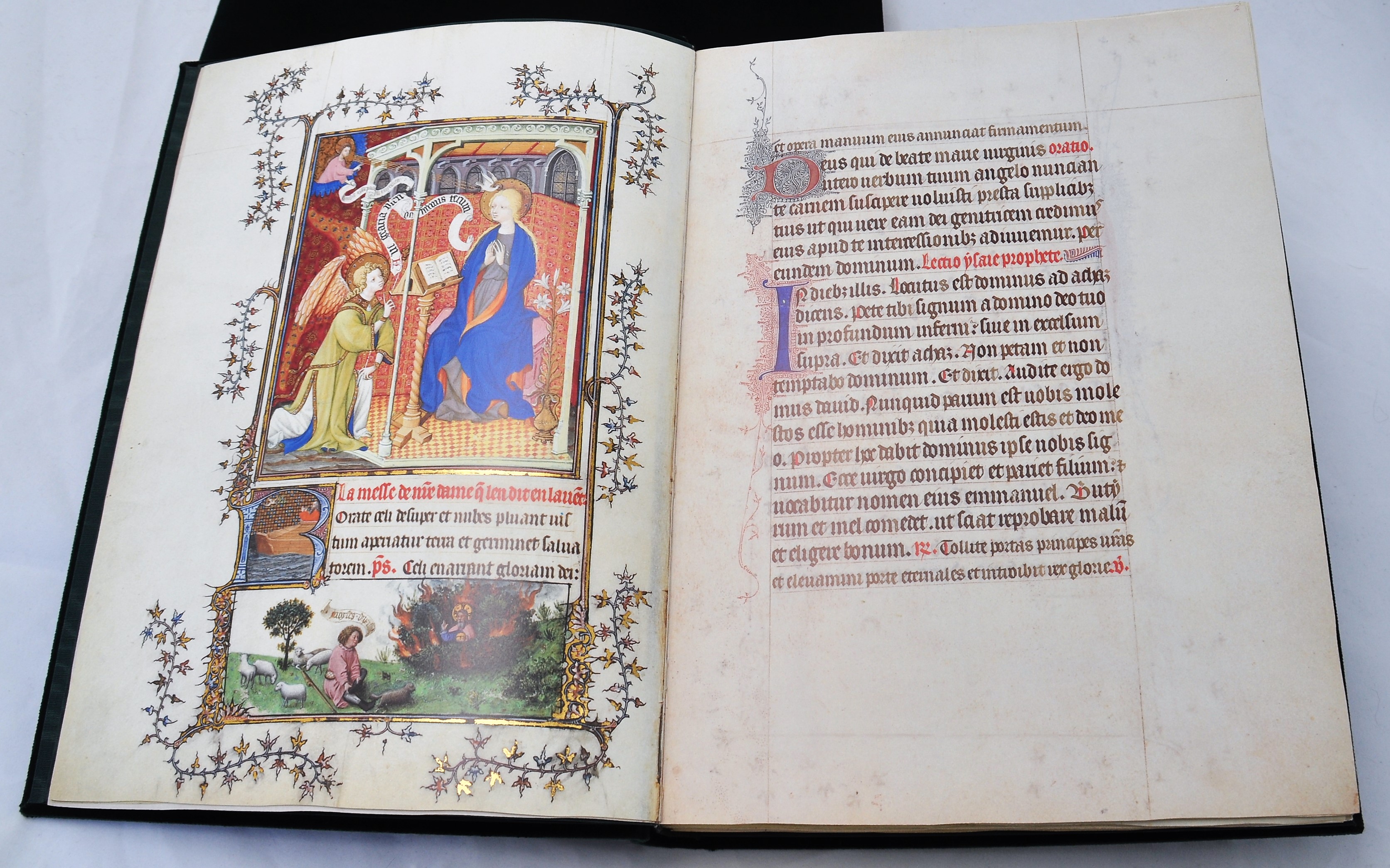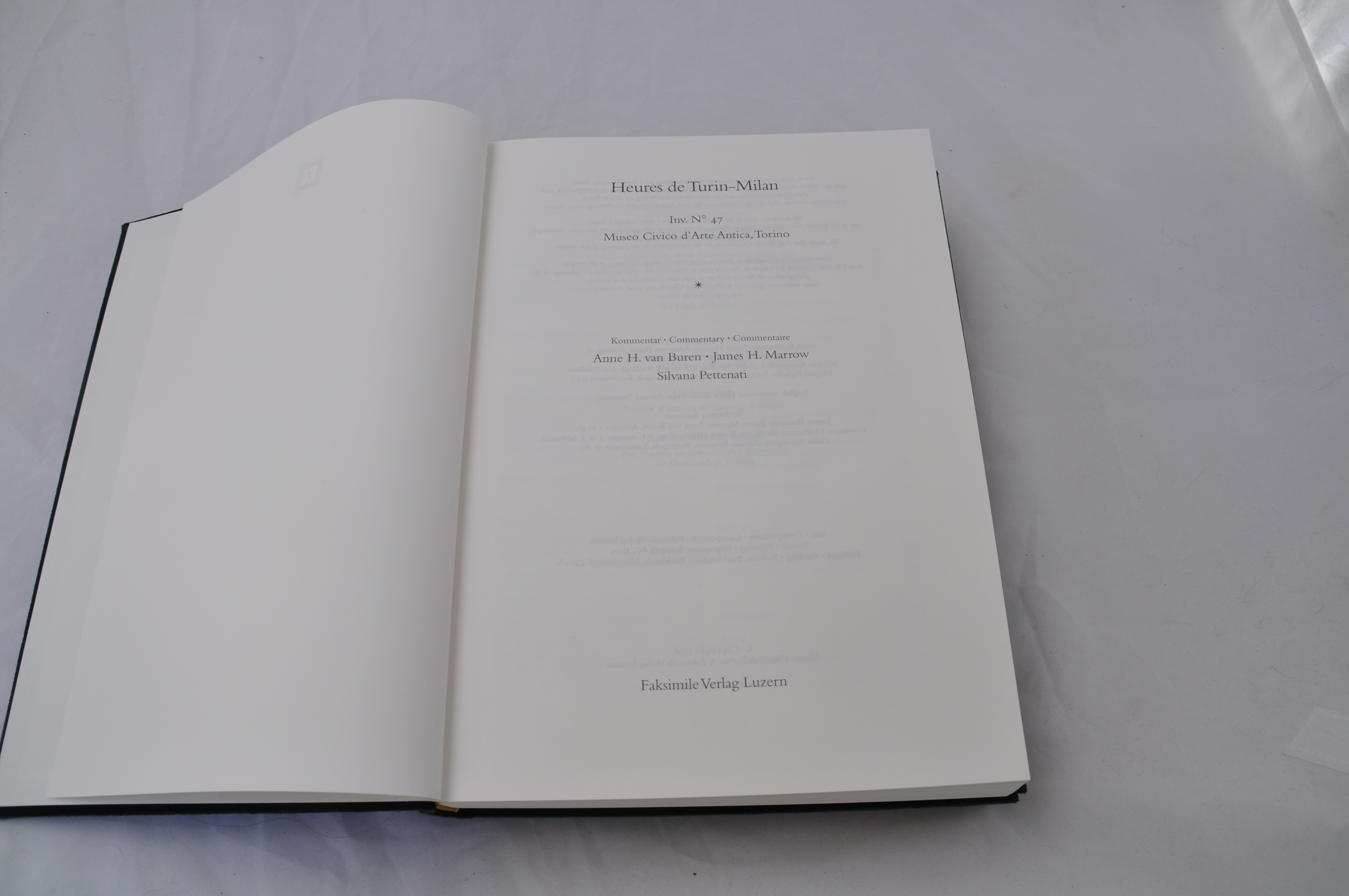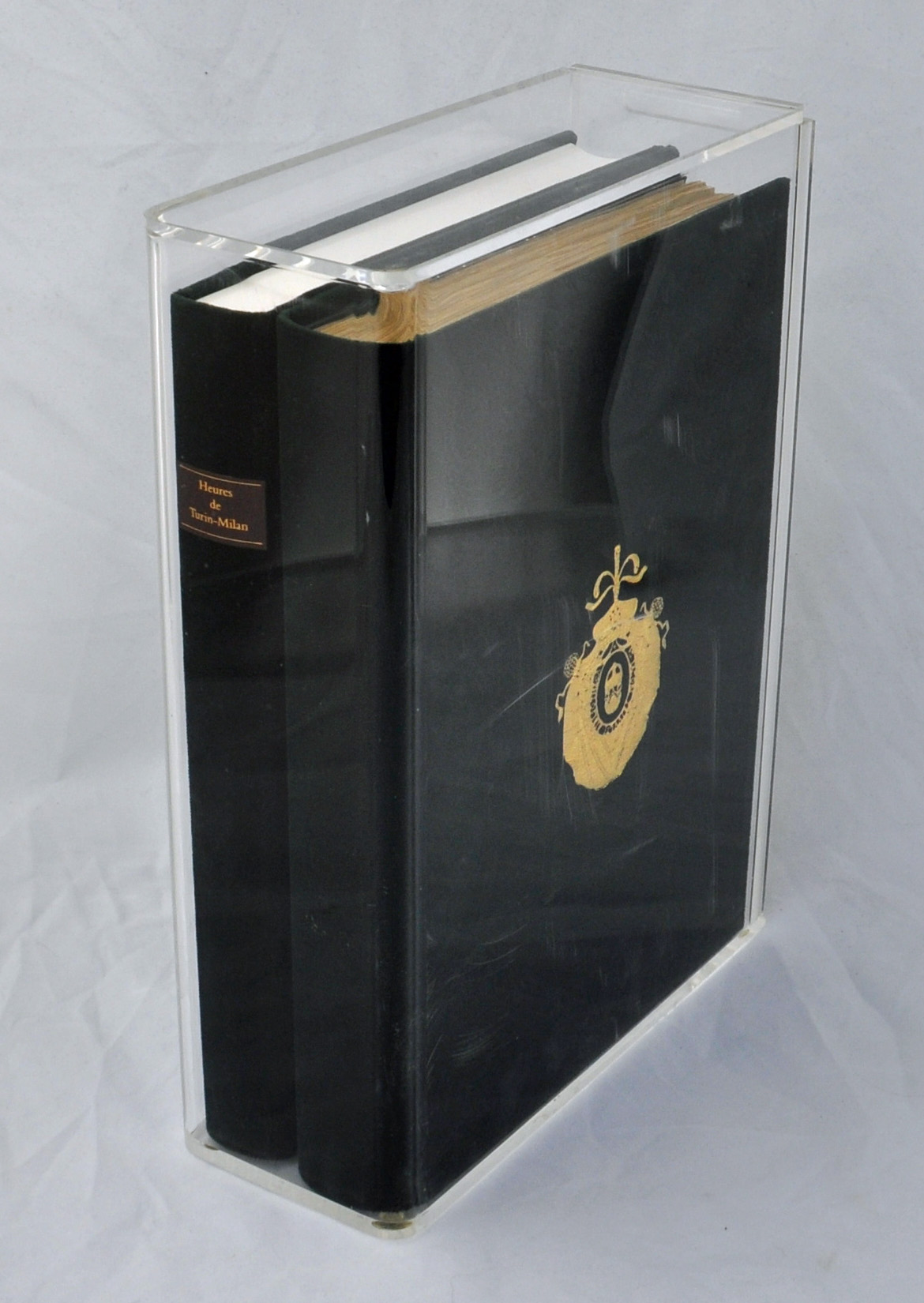Fac-simile of the Hours of Turin-Milan, Jean duc de Berry - Facsimile Verlag Luzern 1995
Fac-simile of the Hours of Turin-Milan, Jean duc de Berry - Facsimile Verlag Luzern 1995
Commentary (English, French, German) by Marrow, James H .; Pettenati, Silvana; Buren, Anne H.
Limited edition of 980 copies
The fac-similé reproduces the aspect and physical characteristics of the original document. The volume of commentairies of this edition contains all the original manuscript in a section of
illustrations in black and white, included a detailed description. The volume of the fac-simile and of the commentary is presented in a protection case in acrylic glass.
The codex is bound and sewn by hand with a green velvet cover and adorned with a fine embodding in gold.
The Hours of Turin-Milan were commissioned by a series of art amateurs for more than fifty years, uniting two artistic movements of the south of the Alps and were a true treasure of painting
styles.
During a period of radical changes, two of the mos progressive artistic movements were represented in this work, notably that of France and the Netherlands.
While some of the miniatures count amongst the most beautiful examples of late Gothic painting in France, some are revolutionary, others visionary. They were celebrated as the beginnings of the old
Dutch painting and are narrowly linked to a famous name, Jan van Eyck .
The only book illuminated by Jan van Eyck
In the Hours of Turin-Milan, we find both the first and the last Jan van Eyck works known to date. They reflect the amazing ability of this artist to assign a slightly greater importance to scenes
from everyday life by playing on light effects.
He was also the first to create realistic portraits. In addition, his paintings render a microscopic reflection of reality. In the miniatures of Jan van Eyck, new techniques are not missing.
What this outstanding artist did at the beginning of his career was never emulated with the same greatness and only the greatest of his successors match it to perfection. The Hours of Turin-Milan are
an irreplaceable document within the history of art.
Originally a monumental project, The Hours of Turin-Milan Hours were created over a period of 70 years. From 1380, the highest nobility and their painters at court took over the production of the
manuscript. Initially, this ambitious project was to create an illuminated manuscript of monumental dimensions.
We are talking about the last part of this manuscript, today officially called the Hours of Turin-Milan. The work was commissioned by the Duke of Berry probably before the turn of the 15th
century.
The first painting campaign was carried out by the master of the Parement of Narbonne. He planned the sequence of pages, executed basic sketches and himself made several important miniatures.
In 1405, the duke initiated a new campaign under the direction of the master of John the Baptist. However, the manuscript was still incomplete at the death of the Duke in 1416 and was then divided in
two parts.
A fascinating and eventful story. The current Book of Hours, the Very Beautiful Hours of Our Lady, has been transmitted to Robinet d'Estampes; the second part consisted of the Hours of Turin burned
in 1904 of which there remain only four leaves, today in the Louvre, and a missal, our Hours of Turin-Milan, on the other part.
The unfinished work of the 15th century was entrusted to Count John of Holland, who inherited it. In 1424, John commissioned the young Jan van Eyck to complete the manuscript. Even this time, the
completion did not
not been achieved.
Jan van Eyck went to the court of Philip of Burgundy and took the manuscript with him. There, the master made a second attempt to finish the book, but was interrupted in his work by his death in
1441.
Philip of Burgundy completed the Missal and the Prayer Book via another Flemish artist in the tradition of Jan van Eyck.
The rest of the manuscript is hidden in the mists of time. It seems to have been split again in the 16th century. The Hours of Turin-Milan then belonged to Count d'Aglié, who passed them on to the
princes of Trivulzio, who finally gave them to the Museo Civico in Turin.
Commentary (English, French, German) by Marrow, James H .; Pettenati, Silvana; Buren, Anne H.
Limited edition of 980 copies
The fac-similé reproduces the aspect and physical characteristics of the original document. The volume of commentairies of this edition contains all the original manuscript in a section of
illustrations in black and white, included a detailed description. The volume of the fac-simile and of the commentary is presented in a protection case in acrylic glass.
The codex is bound and sewn by hand with a green velvet cover and adorned with a fine embodding in gold.
The Hours of Turin-Milan were commissioned by a series of art amateurs for more than fifty years, uniting two artistic movements of the south of the Alps and were a true treasure of painting
styles.
During a period of radical changes, two of the mos progressive artistic movements were represented in this work, notably that of France and the Netherlands.
While some of the miniatures count amongst the most beautiful examples of late Gothic painting in France, some are revolutionary, others visionary. They were celebrated as the beginnings of the old
Dutch painting and are narrowly linked to a famous name, Jan van Eyck .
The only book illuminated by Jan van Eyck
In the Hours of Turin-Milan, we find both the first and the last Jan van Eyck works known to date. They reflect the amazing ability of this artist to assign a slightly greater importance to scenes
from everyday life by playing on light effects.
He was also the first to create realistic portraits. In addition, his paintings render a microscopic reflection of reality. In the miniatures of Jan van Eyck, new techniques are not missing.
What this outstanding artist did at the beginning of his career was never emulated with the same greatness and only the greatest of his successors match it to perfection. The Hours of Turin-Milan are
an irreplaceable document within the history of art.
Originally a monumental project, The Hours of Turin-Milan Hours were created over a period of 70 years. From 1380, the highest nobility and their painters at court took over the production of the
manuscript. Initially, this ambitious project was to create an illuminated manuscript of monumental dimensions.
We are talking about the last part of this manuscript, today officially called the Hours of Turin-Milan. The work was commissioned by the Duke of Berry probably before the turn of the 15th
century.
The first painting campaign was carried out by the master of the Parement of Narbonne. He planned the sequence of pages, executed basic sketches and himself made several important miniatures.
In 1405, the duke initiated a new campaign under the direction of the master of John the Baptist. However, the manuscript was still incomplete at the death of the Duke in 1416 and was then divided in
two parts.
A fascinating and eventful story. The current Book of Hours, the Very Beautiful Hours of Our Lady, has been transmitted to Robinet d'Estampes; the second part consisted of the Hours of Turin burned
in 1904 of which there remain only four leaves, today in the Louvre, and a missal, our Hours of Turin-Milan, on the other part.
The unfinished work of the 15th century was entrusted to Count John of Holland, who inherited it. In 1424, John commissioned the young Jan van Eyck to complete the manuscript. Even this time, the
completion did not
not been achieved.
Jan van Eyck went to the court of Philip of Burgundy and took the manuscript with him. There, the master made a second attempt to finish the book, but was interrupted in his work by his death in
1441.
Philip of Burgundy completed the Missal and the Prayer Book via another Flemish artist in the tradition of Jan van Eyck.
The rest of the manuscript is hidden in the mists of time. It seems to have been split again in the 16th century. The Hours of Turin-Milan then belonged to Count d'Aglié, who passed them on to the
princes of Trivulzio, who finally gave them to the Museo Civico in Turin.
Sold
This item is not available. Please click on « View the catalog » to see similar items available.
Delivery France:
36.00 € incl. VAT (*)
Country prices, click on See
See more
Hotline
Please contact us for any question regarding this object. For any other inquiry, we invite you to fill the contact form.
Other items from the category « Books »
